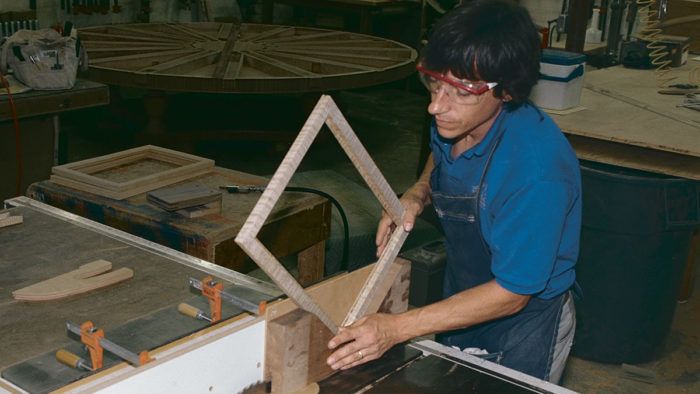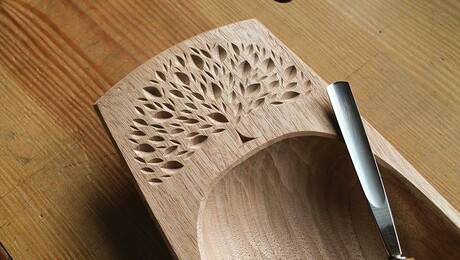A Basic Mirror Frame Detailed to Your Liking
Dress up a molded frame with fretwork cut from a spectacular piece of wood
Synopsis: This article offers basic construction techniques for building a mirror that can be applied to any style mirror, with or without fretwork, or even to a picture frame. You’ll also learn how to make shaped moldings, scrollwork, and fretwork to dress up any mirror. Side information presents sources for scratch-free mirror glass and explains how to order correct sizes for your frame.
Mirrors make great wedding presents. You can make them as small or as large as you like, depending on how generous you’re feeling. Mirrors don’t require a lot of material or time, either. I learned that in college, when I needed to come up with gifts and a little spending money.
After I graduated from college and was unable to find a business that wanted to make me president, I started making mirrors full time. Then other furniture projects came along, and mirrors got put on the sidelines, until I hired an apprentice.
Although I build Chippendale-style mirrors, the basic construction techniques are applicable to any style mirror, with or without fretwork. Actually, you could use these techniques to build picture frames, too. Best of all, you don’t even need clamps to assemble them.
Copying an existing mirror is the easiest way to get a design. My mirror is a copy of one owned by my mother. Trace the design onto plain paper. Then go back with your pencil to refine any ragged curves. The fretwork on old mirrors usually looks symmetrical, but often it’s not. If you trace the fretwork from an old mirror, copy one-half of the design, or you can use mine.
When copying it onto a workpiece, use both sides of the pattern for a mirror image. If you plan to make only one mirror, tape the design to the wood and cut away. For repeatability, make reusable templates out of scrap laminate or fiberboard. If you don’t have a mirror to copy, look in books and magazines. When you find a picture you like, blow it up on a photocopier to the desired size. Or use an existing design and modify it.
Use ears from one design on another. But don’t take away too many details, or you risk making something bland. Old mirrors have lots of details, lots of curves, little points and frills. Don’t make your mirror look like it was made at a factory with a pin router and a 1⁄4-in. bit.
From Fine Woodworking #128
For the full article, download the PDF below.
Fine Woodworking Recommended Products

Circle Guide

Dividers

Blackwing Pencils






















Log in or create an account to post a comment.
Sign up Log in